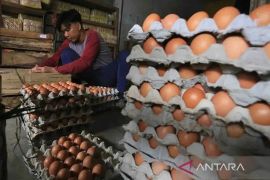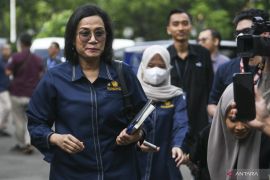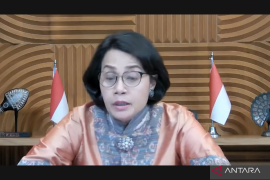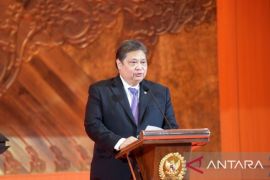Bank Indonesia has been alerted by an escalating trend in future inflationary pressure related to disruptions in supply of volatile foods and possible increases in administered prices. The central bank`s board of governors discussed the projection in their meeting on 5 January, according to Difi A. Johansyah, the bank`s public relations chief, on January 8.
Bank Indonesia believed that a rise in inflationary expectations could be kept to a minimum if steps were taken to improve effectiveness in production, distribution and availability of staples both nationally and regionally.
In the Board of Governors thought that resurgent inflationary pressure in 2010 was driven primarily by mounting prices in the volatile foods category, he said.
Consumer Price Index inflation in December 2010 came to 0.92 percent month on month or 6.96 percent year on year. At this level, the CPI inflation outcome surpassed the target of 5 percent (plus-minus 1.0 percent).
The above-target deviation is explained primarily by high volatile foods inflation running at 17.74 percent (yoy) as a result of crop losses and disruptions in distribution caused by adverse weather conditions.
In contrast, administered prices have charted only moderate inflation at 5.40 percent (yoy), while core inflation is subdued at a mild 4.28 percent (yoy). The low rate of core inflation is explained by a combination of exchange rate appreciation, modest inflation expectations and the present capacity of the economy to satisfy rising demand.
On a cautionary note, the Board of Governors expects the resurgent economic activity to be accompanied by mounting inflationary pressure. Inflationary pressure may be fueled by disruptions in supply of volatile foods and possible increases in administered prices, in addition to rising demand and international commodity prices.
These measures need to be supported by improved policy coordination with the Government. This is essential to boost supply side response in a situation of future improvement in economic activity and thus avoid generating inflationary pressure.
Within this context, the existing cooperation with the government in the Inflation Control Team at central level (TPI) and in the regions (TPIDs) must be strengthened further through enhancements in the programs for bolstering the supplies and particularly improving distribution.
Bank Indonesia expects and is fully confident that the Government will take proper action to address these matters. The combination of these efforts and measures offers assurance for curbing inflation within the targeted range of 5 percent (plus-minus 1.0 percent) in 2011 and 4.5 percent (plus-minus 1.0 percent) 2012.
Triggering factors
The best known inflationary measurements are the CPI, which measures consumer prices and the GDP deflator that measures it in the whole of the domestic economy. With these yardsticks, the most possibly potent inflation triggering factor in this country, however, is fuel price hikes.
The subsidies on fuels are expected to be lifted by limiting the quantity of subsidized fuel. The government had tested the waters in the third quarter of 2010, but withdrew the hike plan with a note for later implementation in the first quarter of 2011.
Price hikes on fuels have indeed the decisive potential to burden the people as they should turn to non-subsidized fuels which are more expensive as they are determined by market price, as many local economic analysts and politician have observed.
In this regard, Legislator Aziz Syamsuddin reminded the government recently of being careful with the policy to scrap fuel oil subsidies because it would affect the people`s life due to the fact that it would affect the prices of basic commodities.
These goods reach markets through a transportation process mainly involving vehicles running on fuel oil. If transport operators have to pay higher fuel prices, transportation costs will automatically rise and so will the commodities` prices, he argued.
Syamsuddin said an increase in transportation cost would automatically create an extra financial burden for the people as basic prices soar while their income remained the same.
"Really difficult situations may emerge from this fact," he said.
In another perspective on inflation, the Jakarta-based Danareksa Research Institute has recently viewed that educational sector in Indonesia had also been a serious triggering factor for inflation, coupled with food sector.
For Indonesia, with poverty 13.3 percent or 31.02 million people of the total population in 2010, the fight to bring down poverty figure would certainly an uphill battle vis-a-vis the forthcoming inflation-induced realities. The government had projected to reduce poverty to 11.5-12.5 percent in 2011.
Whilst economic growth alone would not be able to stand in as the main actor in the efforts to decrease poverty figure in Indonesia, according to Muhammad Ikhsan, an economic aide to the office of the Vice-President.
Ikhsan, also known as the University of Indonesia (UI)`s noted economist, pointed out that history had showed that poverty figure would tend to rise when prices unchecked.
Therefore he preferred poverty reduction program be more based on curbing inflation.
"There have been strong evidences on the significance of macro economy on poverty management. Nevertheless, the relation between price stabilization and poverty has not widely been debated in more intensive ways," Ihksan said.
Ikhsan noted that Indonesia had the experience during the financial and monetary crises in 1999-2004 when economic growth was around 3-4 percent but inflation was controllable to a downward path from 26 percent to 13 percent.
"At the time, poverty reduction was possible because inflation had been controlled particularly in the group of sensitive goods for poor families, such as rice," Ikhsan said. (*)
Reporter: By Vicki Febrianto
Editor: Kunto Wibisono
Copyright © ANTARA 2011











